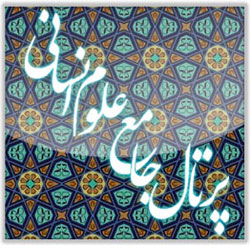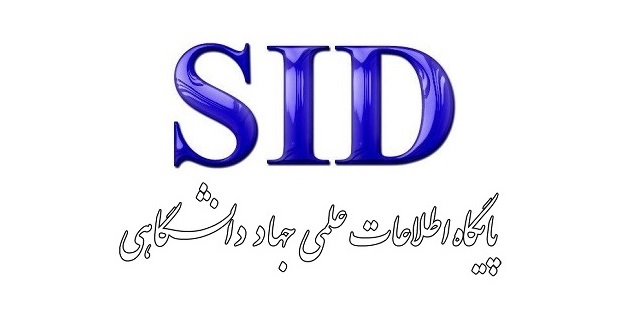Explaining the Indicators Influencing the Globalization of Art and Visual Artists Using the Delphi Model
Keywords:
Art of painting, globalization of art, global painter, Delphi model, universalityAbstract
The manifestation of painters’ ideas through one or a collection of artworks on a global scale—and the pursuit of universal recognition and access to international art platforms—is not only one of the primary concerns of emerging local artists, but also a significant area of interest for many art critics and theorists. These stakeholders aim to analyze the reasons and mechanisms behind the emergence of globally recognized art and artists. Achieving this prestigious position and securing a lasting legacy in the history of world art requires adequate awareness and understanding of global art as both universal art and international art. This article seeks to answer the question: What indicators have contributed to the emergence and decline of the globalization of art and visual artists? To address this, multiple indicators were identified and defined based on prior research in the field of global art. Given the significance of the findings—over seventy indicators were extracted—the study focused on the influential factors contributing to the globalization of visual art and artists. A genealogical analysis of the indicators influencing global art revealed the intellectual contexts in which these indicators emerged and the consequences they have had for the field of art. By distinguishing key indicators such as cultural identity, attention to the content of the artwork, aesthetic value, communication strategies, worldview and ideology of the artist, the curators’ role in accurately positioning artworks, and the role of critics in organizing international exhibitions, it becomes possible to evaluate the dimensions of this phenomenon in the contemporary era and understand the conditions enabling or restricting its globalization. The findings of the present study emphasize that the globalization of Iranian painters does not necessarily depend on abandoning cultural identity or conforming to international art norms such as creating purely formalist works. Rather, it is possible to create globally-oriented paintings by focusing on the extracted indicators—such as cultural identity, content-oriented creation, communication strategies, and more.
Downloads
References
1. Moridi MR, Taghizadegan M, Moridi MR. A Sociological Study of the Structural Elements of the Art System The Participation of Painters in Collective Activities of the Iranian Painting Art Community. Social Sciences of Ferdowsi University of Mashhad. 2005;1(2):2-31.
2. Moridi MR. Paradigm of Global Art: A Sociological Analysis of Four Analytical Models of Global Art. Journal of Visual and Applied Arts. 2013;6(11):5.
3. Afrashi A. A Linguistic Interpretation of Global Art. Khayal. 2006;19(1):122-31.
4. Hanping F, Shahir S. An Analysis of Spatial Construction in Pictorial from the Perspective of Formalism. Journal of Arts Research and Education. 2024;24(1).
5. Qarebaghi AA. Is the Globalization of Art the Same as the Old Saying? Tavous Quarterly. 2001(8).
6. Samiazar A. Conceptual Revolution. Tehran: Nazr PublishingER -; 2012.
7. Haji Yusefi AM. Globalization and the Field of International Relations. Quarterly Journal of International Studies. 2008(19):127-60.
8. Sosnytskyia Y, Oksana P, Oksana S, Ivan D, Iryna H. The role of art and humanities in shaping cultural approach. Multi disciplinary Reviews. 2024.
9. Bastid R. Art and Society: Tous Publications; 1995.
10. Mamatov J. Parameters of the Connection between Art and Culture. Pindus Journal of Culture, Literature, and ELT. 2022;2(3):69-76.
11. Williams R. Culture and Society. Tehran: Negah; 2018.
12. Greenblatt S. How Did the World Become Modern? Tehran: Bidgol; 2018.
13. Azad Aramaki T. Hangout and Modernity in Iran. Tehran: Lohe Fekr Publications; 2005.
14. Ahmadi B. Truth and Beauty. Tehran: Center Publications; 2022.
15. Spence C, Youssef J, Michel C, Woods A. Assessing the aesthetic oblique effect in painting and plating. International Journal of Gastronomy and Food Science. 2019;17:100168.
16. Mirsepasi N. Designing a Model for Human Resource Excellence in Iranian Government Organizations Using the Delphi Technique. Future Studies in Management. 2010:1-24.
17. Shamisa S. Literary Criticism. Tehran: Mitra Publishing; 2020.
18. Deng Y. Exploring the Representativity of Art Paintings. IEEE Transactions on Multimedia. 2021;23:2794-805.
19. Salzman PC. Understanding Culture: An Introduction to Anthropological Theory. Tehran: Scientific and Cultural Publishing Company; 2015.
20. Sanz-Hernández A, Covaleda I. Sustainability and creativity through mail art: A case study with young artists in universities. Journal of Cleaner Production. 2021;318SP - 128525.
21. Pénasse J, Renneboog L, Spaenjers C. Sentiment and art prices. Economics Letters. 2014;122(3):432-4.
22. Sidorova E. The Cyber Turn of the Contemporary Art Market. Arts. 2019;8(3):84.
23. Alexander V. Sociology of the Arts: A Description of Beautiful and Popular Forms of Art. Tehran: Sociologists; 2021.
24. Winkleman E. Selling Contemporary Art: How to Navigate the Evolving Market: Alworth Press; 2017.
25. Davidson JC. Staging art and Chineseness: The politics of trans/nationalism and global expositions: Manchester University Press; 2020.
Downloads
Published
Submitted
Revised
Accepted
Issue
Section
License
Copyright (c) 2025 سید جواد درخشن, ابوالفضل داودی رکنآبادی (نویسنده)

This work is licensed under a Creative Commons Attribution-NonCommercial 4.0 International License.









